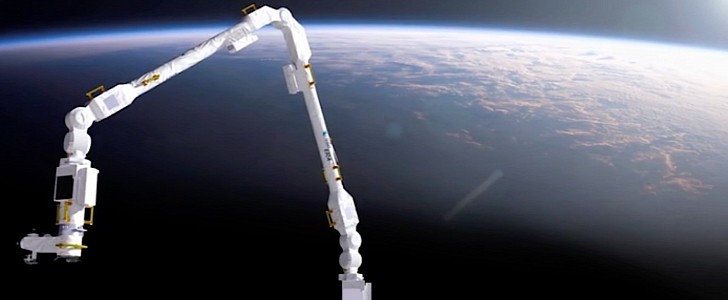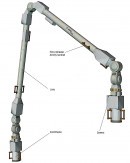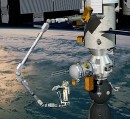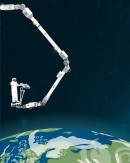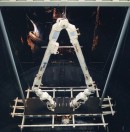On Wednesday, July 21, a Russian Proton rocket took off from the Baikonur Cosmodrome in Kazakhstan, heading for the International Space Station (ISS). On board the rocket was a brand new module for the station, complete with one of the most advanced robotic arms ever sent to space.
The module is called Nauka, and it’s meant to replace the Pirs docking module. The hardware was initially scheduled for launch more than a decade ago, but got delayed for various reasons.
Attached to the Nauka is the so-called European Robotic Arm, or ERA. Just like its name says, we’re talking about a robotic arm meant to be used to assist astronauts during spacewalks, but also perform a variety of other tasks.
ERA is 11 meters (36 feet) long when fully extended, it comes with seven joints, and it is designed to “handle multi-tonne payloads with a large range of motion for assembly tasks.” Made from carbon fiber and aluminum, it can anchor itself to the station and move back and forward by itself, in a hand-over-hand-like motion between fixed base-points.
The arm can be controlled from inside the station by the crew, or can be programmed to perform this or that task on its own, with an accuracy of 5 mm, according to the European Space Agency.
The hardware launched from Earth yesterday is now slowly getting into position to rendezvous with the ISS. The docking of the Nauka module is scheduled for July 29, and the installation of the robotic will follow, requiring a number of spacewalks to be performed by the astronauts on board.
Once ready for action, the first order of business for the arm will be to install a large radiator and set up the airlock for Nauka, tasks that should be completed during the robot’s first year in space.
Attached to the Nauka is the so-called European Robotic Arm, or ERA. Just like its name says, we’re talking about a robotic arm meant to be used to assist astronauts during spacewalks, but also perform a variety of other tasks.
ERA is 11 meters (36 feet) long when fully extended, it comes with seven joints, and it is designed to “handle multi-tonne payloads with a large range of motion for assembly tasks.” Made from carbon fiber and aluminum, it can anchor itself to the station and move back and forward by itself, in a hand-over-hand-like motion between fixed base-points.
The arm can be controlled from inside the station by the crew, or can be programmed to perform this or that task on its own, with an accuracy of 5 mm, according to the European Space Agency.
The hardware launched from Earth yesterday is now slowly getting into position to rendezvous with the ISS. The docking of the Nauka module is scheduled for July 29, and the installation of the robotic will follow, requiring a number of spacewalks to be performed by the astronauts on board.
Once ready for action, the first order of business for the arm will be to install a large radiator and set up the airlock for Nauka, tasks that should be completed during the robot’s first year in space.
